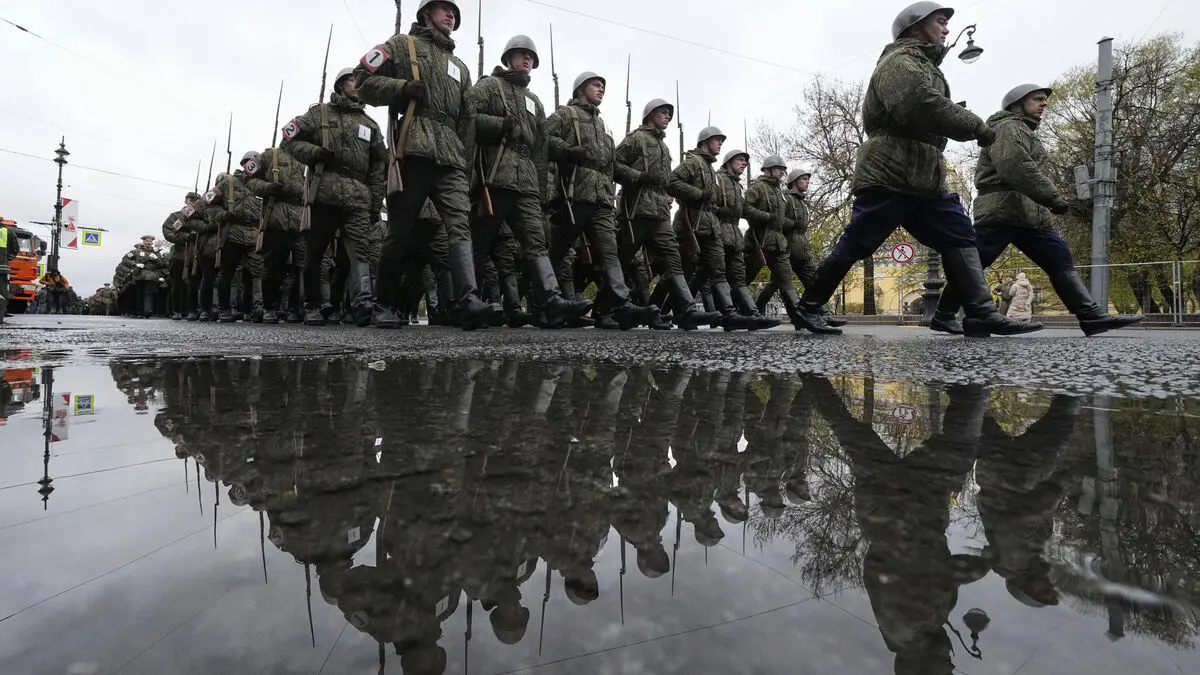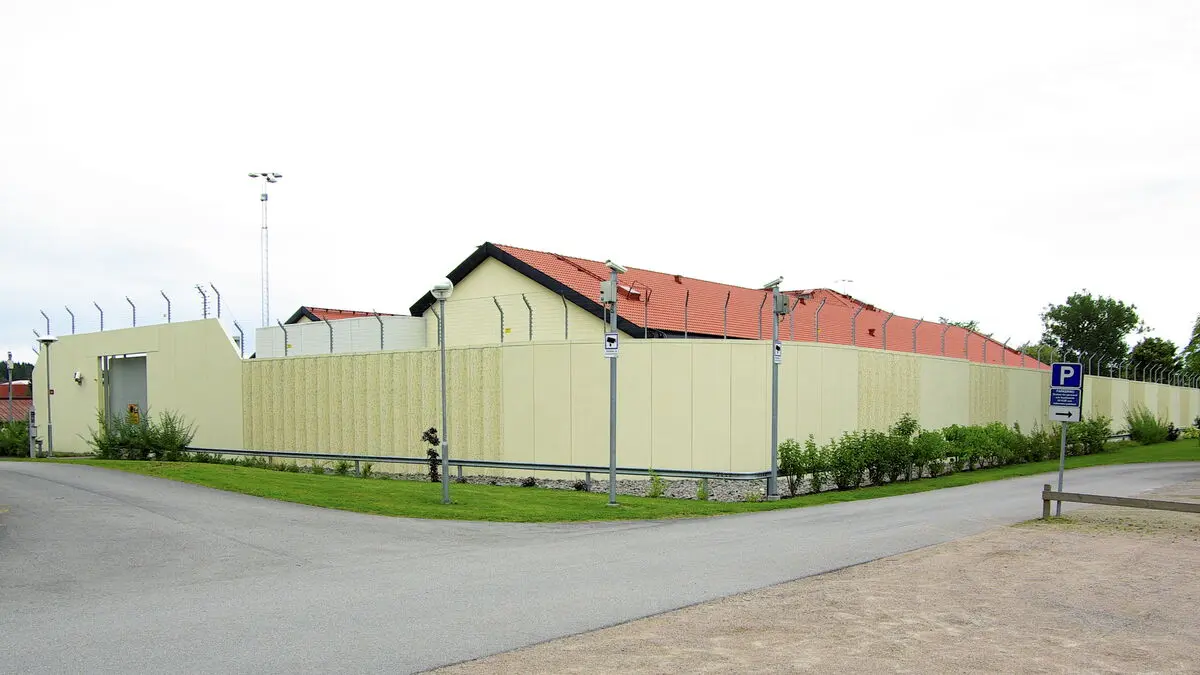The cows' bellows ring out happily, drowning out the engine noise from the jeep as it struggles up the hill. Each bellow has an individual tone, and when the animals come running, an almost deafening cacophony forms.
The surrounding snow cannons will rest for a few more months. Instead of skiers and snowboarders, hikers – and Gérard Berrux's cows – will inhabit the slopes.
"But with the warm temperatures, you can expect to get the cows out earlier in the season and let them stay out later. So what we lose in the dry period, we can make up for in the longer season," says Berrux as he pats his animals and feeds them leftover bread.
The cows are really more of a hobby. His livelihood is the small-scale bakery, where the flour comes from his own wheat fields in Annecy. He plants at least 15 different types of wheat. The idea is that at least one should be suitable for the type of summer it happens to be.
They have different shapes and colors, some have knobs, some don't. You really see the diversity and it's important from an adaptation point of view.
Avoids certain places
The Alps have been warming twice as fast as the global average. From the window of his office in central Chamonix, Olivier Greber can follow climate change in real time. The Bossons glacier, fed by ice from the Mont Blanc massif, is a shadow of its former self. A few decades ago, it reached all the way down to the valley. Now it ends well up the mountain. When Greber took his mountain guide qualification in 1989, he did so at Les Bossons.
"It wouldn't have been possible today. There's been a big, big change. It's been torn apart and retreated so much. The place where I graduated is now dry, and higher up the glacier is steeper and more dangerous," he says.
Greber heads the guide company Compagnie des guides de Chamonix, France's largest and oldest, with around 240 guides. They take tourists on climbing, hiking and off-piste skiing trips, and then encounter the changing climate. One example is the permafrost, the deep frost in the mountain massif. When the sun now shines in the summers, it has begun to let up, increasing the risk of rockfalls.
"There are some places we don't go to during the summer and some places we don't go to at all anymore," says Greber.
At the same time, he notes that accidents have not increased, which he sees as a sign of awareness. Guides are learning to listen to nature's signals.
Ski resorts may disappear
In Chamonix, several lifts are open year-round. Currently, 45 percent of the revenue for the lift company Compagnie du Mont-Blanc comes from the summer months.
"When there are heat waves in France, it's very good for business. People come here where it's ten degrees cooler than in Lyon or Paris," says CEO Mathieu Dechavanne.
That’s not to say that the ski system isn’t facing its fair share of problems from climate change. Lift cables are often covered in half a metre of ice in winter as humidity and wind conditions change, and a new lift has had to be installed to reach the shrinking Mer de Glace glacier. A high-altitude lift pylon began to lean as permafrost thawed, leading to an emergency shutdown a few years ago.
Even at an altitude of 2,800 meters, we have discovered problems that are directly linked to global warming, says Dechavanne.
Millions of visitors
The Alps are the world's biggest ski market, with 10,000 lifts and millions of visitors. But the lower slopes are at risk of being wiped out as snow is replaced by rain. Some are hoping to delay the inevitable with the help of snow cannons, which in turn require water.
Dechavanne can understand that the low-lying ski systems are fighting for their survival.
If you live in a place that has always had a lift system, you don't want to be the one to put the nail in the coffin. You have pressure from the locals and ski lovers who say, "We can continue for another five or six years." But it's clear that it only goes one way.
Water has become a contentious issue in some places. In nearby La Clusaz, the municipality wanted to build a dam on a sensitive peatland to run snow cannons. This summer, the Grenoble court put a stop to the plans after years of protests and land occupations organized by environmental organizations such as the FNE, where Anne Lassman-Trappier is president of the Haute-Savoie regional branch.
"There are many dams built or proposed in the Alps, simply because it has become too warm to ski. It's like fighting climate change with flawed solutions that increase environmental damage," she says.
The decision: No more lifts
Chamonix's lift system is high, with a peak elevation of 3,842 meters, and is expected to be snow-sure for decades to come. When other ski resorts are forced to close, Chamonix could strike gold. But that's not a thought that appeals to Éric Fournier, the town's mayor since 2008.
Chamonix is an unusual place. We have nearly 9,000 year-round residents and between 70,000 and 80,000 tourists,” he says.
Is it even possible to continue marketing ourselves as a tourist destination?
During his time in office, there has been a halt to the construction of new lifts and tourist accommodation. Fournier simply does not want to exploit Chamonix any more.
It hasn't been a difficult choice for me, but I think from a financial perspective it hasn't been easy.
He admits that it could be problematic when tourist pressure is expected to increase. What he doesn't want to see is more day trippers arriving by car and creating parking chaos. He wants to focus on getting visitors to stay a few nights, but spreading them out more over the season with the help of more expensive day tickets, congestion charges and advance booking requirements.
I was born here and every day when I wake up and see this I tell myself that I am lucky, he says, looking out over the Mont Blanc massif through the open balcony door.
I have a responsibility to create a balance between economy and environment, that's just the way it is.
One would imagine the mayor would clash with the CEO of the ski lift company. But the two surprisingly agree that expansion is not the right way to go.
"You come to Chamonix to experience the beauty of nature. Ski lifts are also a kind of pollution. We would be shooting ourselves in the foot by putting up more," says Mathieu Dechavanne.
During the 20th century, temperatures in the Alps have risen by 2 degrees, twice as high as in the Northern Hemisphere. Since the 1980s, the increase has been half a degree per decade.
Half a degree means approximately a 100-meter height difference, which means that animals and plants that live at a certain altitude must start living at a higher altitude, on a smaller area than before.
Less precipitation falls as snow at lower elevations, and more snow melts in the summers even at higher elevations.
39 percent of glacial ice has disappeared since the turn of the millennium. About the same amount more is expected to disappear, even if emissions were to stop.
Permafrost, ground that is always frozen, has become less dense, leading to a risk of landslides and avalanches.
Animals are affected in different ways. Migratory birds arrive earlier in the spring, and toads lay their eggs earlier. Bark beetles have become more numerous.
Warm springs and mild winters mean that the growing seasons have become longer.
Warmer summers with less precipitation have led to drought and groundwater shortages.
Sources: Crea, Nature, and others.





